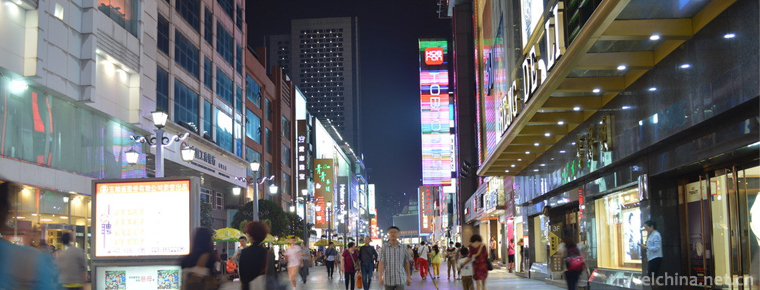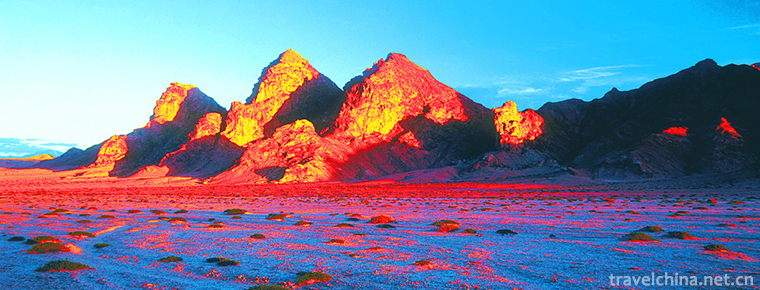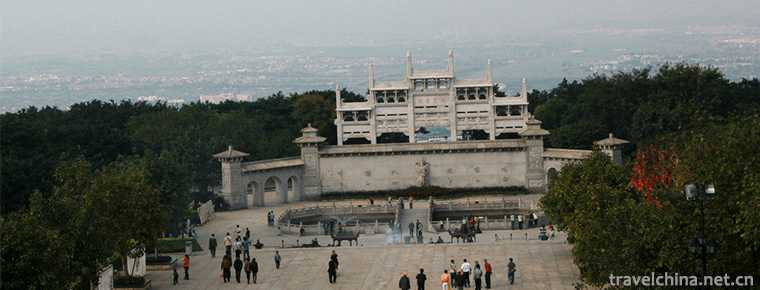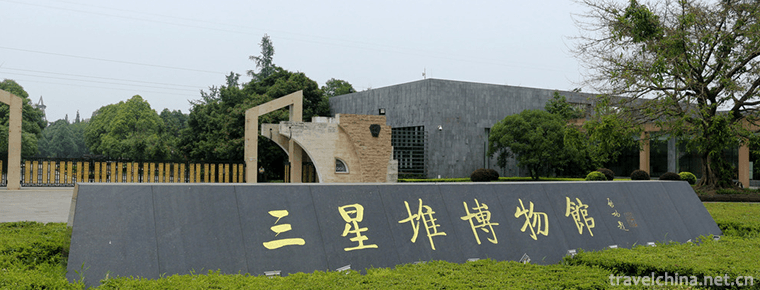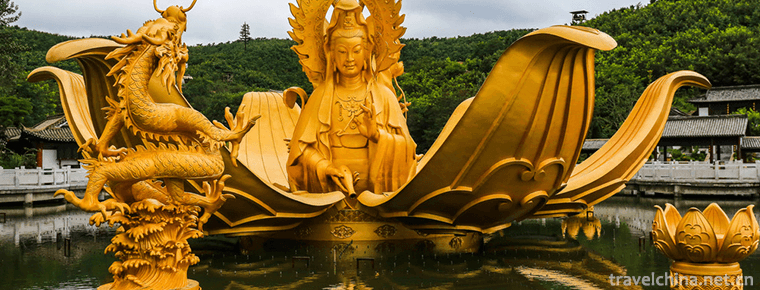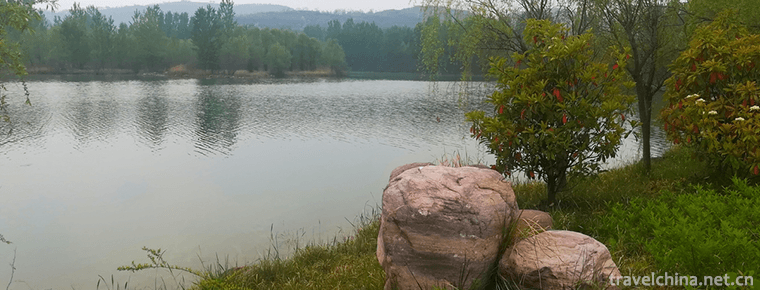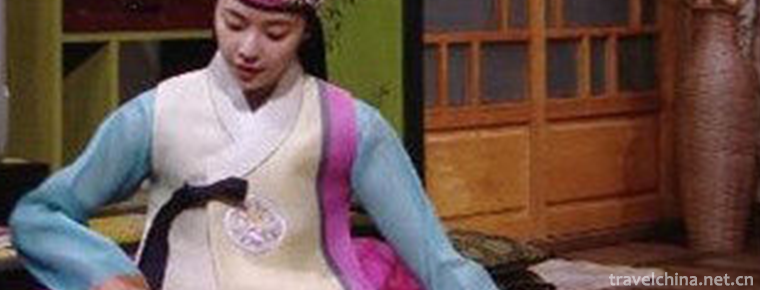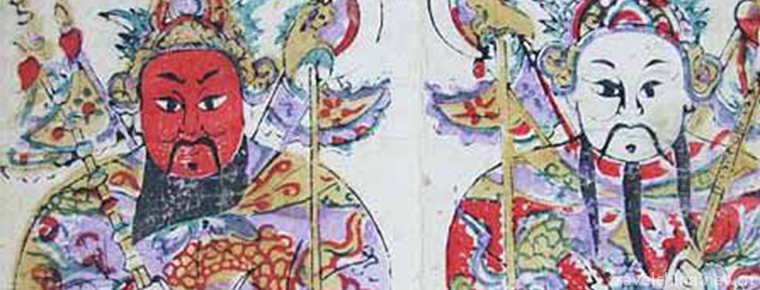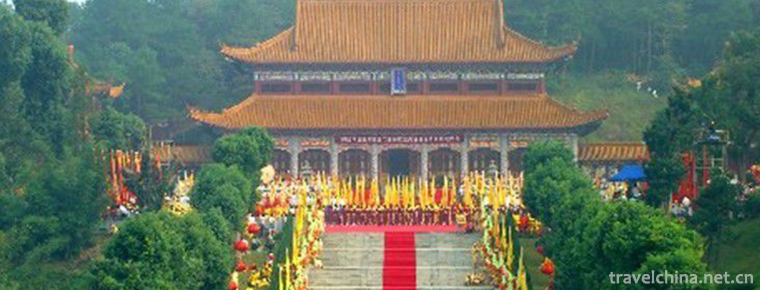Yueyang Tower and Junshan Island Scenic Area
Junshan Island, formerly known as Dongting Mountain, Xiangshan Mountain and Youyuan Mountain, is located in the territory of Yueyang City. It is an island in Dongting Lake, 800 li away from Yueyang Tower, a famous building for thousands of years. Its total area is 0.96 square kilometers. It consists of 72 peaks of different sizes. It is listed as the 11th Fukushi in the world by Daoshu and is now a key national scenic spot. District, National 5A Tourist Area.
Located in the territory of Yueyang City, it is an island in Dongting Lake. It is a mountain far away from Yueyang Tower (now Yueyang). Its author is called Junshan. Junshan is small and exquisite, surrounded by water, beautiful scenery, fresh air, is a summer resort, its peaks are intertwined, ravines ring, green bamboo and wood, picturesque scenery. The terrain is high in the southwest and low in the northeast, with an average altitude of 55 m and the highest point of Xiangshan is 63.3 M.
Mountains in the southwest cliff cliffs, strange rocks, rock caves. Because it floats in the vast smoke waves of Dongting, mysterious and vague, far-sighted Zhihengdai, and near-sighted Qingluo, Liu Yuxi, a famous poet of the Tang Dynasty, describes its scenery and beauty with the poem "Looking at the green mountains and waters of Dongting, a green snail in a silver plate".
There are many monuments on the mountain. According to the Records of Baling County, 36 pavilions, 48 temples, 5 wells and 4 sets were destroyed successively in the late Qing Dynasty and the Republic of China. Now, the tombs of the second imperial concubines, Xiangfei Temple, Liu Yijing, Chuanhu Pavilion, Longyin Pavilion, Jiuxiangting Pavilion, Yangyizhai, Longxiujing and Feilai Bell have been restored. There are also new Dongting Villa, Tea House, Hotel, Zhu Yanbiwa, exquisite and elegant, unique and interesting. The island is surrounded by exotic bamboos. Junshan, also known as "Dongting Tea Island". Junshan Silver Needle was a tribute to the emperor in Tang Dynasty. It was once awarded a gold medal at the International World Exposition. In addition, there are scarab, green turtle and other rare animals. With the development of tourism, new scenic spots in Junshan have been exploited, tourist facilities and buildings have emerged, ancient tea culture, bamboo culture and food culture have been excavated, and Junshan has taken on a new look.
Junshan has many places of interest and rich cultural heritage. It is said that there are 5 wells, 4 sets, 36 pavilions and 48 temples on Junshan Island. Scholars and Mohists of past dynasties have found the earliest cliff stone carvings, Nebula maps and Neolithic sites in the history of China around Junshan's "strange", "small", "smart", "quiet", "ancient", or prose poems, or inscriptions and inscriptions.
In September 2011, the National Tourism Scenic Area Quality Grading Committee officially approved Yueyang Tower-Junshan Island Scenic Area as a national 5A tourism scenic spot.
Junshan has a broad and profound humanistic background. Xiangfei Temple, known as "the first ancestral temple in the south of the Yangtze River", has Wudi's Jiaotong Temple in the Han Dynasty, Yangyizhai Village in the peasant uprising in the Song Dynasty, the earliest rock-scraping inscription in the history of China, and Zhang Zhidong, the first longest couplet in the world, which combines characters, stories, scenery and famous poems, is one of the best in the couplet.
Junshan has different scenery in four seasons, beautiful natural scenery, beautiful flowers in spring, silver plate in summer, red and green leaves of fairies in autumn opera forest, and migratory birds in Dongting Lake in winter. Junshan is rich in products, rich in China's top ten famous tea - Junshan Silver Needle, in addition to Junshan turtles, Dongting Silver Fish, known as the "Three Treasures of Junshan".
"Looking at the mountains and rivers of Dongting, there is a green snail in the silver plate. "Liu Yuxi, a poet of the Tang Dynasty, was quick in thinking and rich in associations. He wrote a well-known song of the ages, which vividly depicted the landscape, location and beautiful and charming scenery of Junshan in front of visitors. Junshan District is located in the East Dongting Lake, 12 kilometers southwest of Yueyang City, with its advantageous location and convenient transportation. It is far away from the ancient famous buildings. Among the few major tourist routes in the country, Junshan is at the hub of the extension of the middle section of the Yangtze River Three Gorges tourist route.
Yueyang Tower is located on the west gate wall of the ancient city of Yueyang City, Hunan Province, overlooking Dongting and looking ahead to Junshan. Since ancient times, it has the reputation of "Dongting Tianshui, Yueyang Tianlou". It is also known as the "three famous buildings in the south of the Yangtze River" together with Huanghe Tower in Wuhan, Hubei Province and Tengwang Pavilion in Changxi, Jiangxi Province. In January 1988, it was designated as a key cultural relic protection unit by the State Council.
The main building of Yueyang Tower is 19.42 meters high, 14.54 meters deep and 17.42 meters wide. It has three stories, four columns, eaves, helmet roof and pure wood structure. Four Nanmu gold pillars in the middle of the building run through the roof directly. They are surrounded by corridors, rafters, rafters and purlins, joining each other as a whole.
Yueyang Tower is the only ancient building among the three famous buildings to keep its original appearance. Its unique helmet structure reflects the wisdom of the ancient working people and the ingenious design and skills of skilled craftsmen. Fan Zhongyan's well-known Yueyang Tower in the Northern Song Dynasty made Yueyang Tower more famous in the world.
Yueyang Tower was built around 220 AD. Its predecessor was Legend has it that Lu Su, a general of the Eastern Wu Dynasty, read military buildings, and Baling City Tower in the Western Jin and Southern and Northern Dynasties.
In the three years of Song, Yuan and Jia (426) of Southern Dynasty, Yan Yanlu, a great poet in Zhongshu, passed through Baling, and wrote the poem Shi'an County and Zhang Xiangzhou Dengba Ling City Tower. The poem contains the phrase "Qing Atmosphere, Yun Yueyang" and the name of "Yueyang" was first seen in the poems.
After Li Bai's poems in the middle Tang Dynasty, they were called "Yueyang Tower". At this time, the city of Baling has been changed into Yueyang City, and the city building of Baling has also been called Yueyang Tower.
Teng Zijing was banished in the Spring of the Fourth Year of Qingli (1044) in the Northern Song Dynasty and was appointed to the state affairs of Yuezhou Zhijun. Tengzijing rebuilt Yueyang Tower and planned to build Yanhong Dyke in the Spring of the Qingli Five Years (1045) in the Northern Song Dynasty. Yueyang Tower was destroyed by fire in October, 1078, the first year of Yuanfeng in the Northern Song Dynasty. In the spring of the second year of the Northern Song Dynasty (1079), Zheng Min, the agent of Yuezhou, renovated the Yueyang Tower. In the eighth year of the Proterozoic era (1085) in Mengxia, Mifu wrote "The Story of Yueyang Tower" as a gift to the requester. During the period of Chongning in Northern Song Dynasty (1102-1106), Sun Xie of Zhizhou Army in Yuezhou rebuilt Yueyang Tower.
In the first month of the third year of Jianyan in the Southern Song Dynasty (1129), Yueyang Tower was damaged by the fire. Yueyang Tower was rebuilt in the fourth year of Qingyuan in Southern Song Dynasty (1198). In the seventeenth year of Jiading in Southern Song Dynasty (1224), Yueyang Tower was destroyed by fire on June 21 and 23. In the eleventh year of Chunhu in Southern Song Dynasty (1251), Yueyang Tower was rebuilt.
General Liu Yanzhen, General of Mingwei, renovated Yueyang Tower from the reign of Xuande in Ming Dynasty to the three years of orthodoxy (1426-1438). In the seventh year of Chenghua Ming Dynasty (1472), Wu Festival, the prefecture of Yuezhou, was rebuilt into Yueyang Tower in May. In the second year of Jiajing in Ming Dynasty (1523), Han Shiying, the prefecture of Yuezhou, rebuilt Yueyang Tower and compiled the Collection of Yueyang Tower Poems. In the sixth year of Jiajing in the Ming Dynasty (1527), a flood occurred in May, and the pillars of Yueyang Tower were broken by lightning. In the forty-third year of Jiajing Ming Dynasty (1564), Li Linyang, the prefecture of Yuezhou, renovated the Yueyang Tower and wrote "Rebuilding the Yueyang Tower". In the first year of Longqing Ming Dynasty (1567), Yuezhou Zhifu Li gradually renovated the city walls and rebuilt Yueyang Tower.
In September of 1646, the Yueyang Tower was destroyed in the war. Seven years (1650) in Shunzhi, Qing Dynasty, Li Ruoxing, the prefecture of Zhifu, was renovated. Years ago, it was destroyed by fire. Yueyang Tower was rebuilt in 1663, the second year of Kangxi reign of Qing Dynasty. In the spring of Emperor Kangxi's 22nd year (1683), Li Yushi, the prefecture of Yuezhou, and Zhao Shiheng, Baling County, advocated the reconstruction of Yueyang Tower. In the twenty-seventh year of Emperor Kangxi's reign of Qing Dynasty (1688), Yuezhou Fire burned Yueyang Tower. In the fifth year of Qianlong reign of the Qing Dynasty (1740), Bandi, Governor of Huguang, renovated Yuezhou Mansion and Yueyang Tower at the age of Steelpole Island. In winter, work will be started to rebuild Yueyang Tower and the city wall. The rebuilt Yueyang Tower has three floors, and a hotel is built on the right side of the building. In the seventh year of Qianlong reign of the Qing Dynasty (1742), Huang Ning Road, the prefecture of Yuezhou, was renovated and donated to the front hall of the hotel. Next year, the Ministry of Criminal Justice asked Fan Zhongyan, Zhangzhao Shu and Shangshu Zhangzhao Shu, to put Yueyang Lou Ji on the floor screen. In the 39th year of Qianlong reign of the Qing Dynasty (1774), Yuezhou Prefecture prefecture, Landixi and Baling prefecture, Xiong Mao awarded for repairing Fucheng. Liang Guozhi, governor of Hunan Province, has played a part in repairing the city walls of the government, Yueyang Tower and Wenxing Pavilion. In the forty years of Qianlong reign of Qing Dynasty (1775), Xiong Mao Award of Zhixian County in Baling County was awarded to build Yueyang Tower, and Wangxian Pavilion was built on the right side of the building, while Xianmei Pavilion was built on the left side of the building.
In the first year of Qingdaoguang (1821), after Zhai Shenghuan's resignation, the new Zhifu Zhiqin persuaded Yang Tingzhu, Yuezhou Zhifu Zhai Shenghuan, to donate money for renovation and to rebuild the berth of Yueyang Tower. Nine years of Qingdaoguang (1829) Lu Enzhan, the prefecture of Xiayue prefecture, urged donations to repair Yueyang Tower and Xianmei Pavilion. Daoguang 19 years (1839) in December, Yuezhou agent Zhifu Zhai Shengjiaji repaired Yueyang Building. And the "Doumu Pavilion" was built. Six years of Tongzhi (1867) in the Qing Dynasty, Zeng Guoquan allocated Yuekali tax to rebuild Yueyang Tower. "Doumge" will be transformed into "Three Drunk Pavilions". He Shaoji's inscription "Liuxian Pavilion" hangs on the pavilion's forehead. During the twelve years of Tongzhi reign in the Qing Dynasty (1873), Zhang Derong, the prefecture of Yuezhou prefecture, urged donations to renovate the foundation of Yueyang Tower, and at the same time, Chen Han Pavilion was built. In the sixth year of Guangxu Qing Dynasty (1880), Zhang Derong, the prefecture of Yuezhou, rebuilt the Yueyang Tower and moved the building to the east by more than six feet. In June, 1897, Huang Zunxian climbed the Yueyang Tower and wrote the poem Shangyeyang Tower. 4 years from the thirty-four years to the Republic of China (1908~1915), the Japanese East Asian National Academy of classical learning has sent 7 batches of students to * * * Yueyang Tower and wrote them in the compilation of "Zhi Zhi Bu Zhi Zhi". In the third year of Xuantong reign of Qing Dynasty (1911), Gan Xingdian led seven or eight hundred people to occupy Yueyang Tower and asked the gentry and merchants of Yuezhou for grain and silver. Tang Mang, Song Run and Zhinagan Xingdian, the capital of Hunan Province.
In the eleventh year of the Republic of China (1922), on July 27, the Hunan Army occupied Yueyang, and most of its windows, beams and pillars were destroyed. The twelve year of the Republic of China (1923) was the year of the ancient city wall, only Yueyang Tower and half of the street still exist a little. On January 21, 1924, in the thirteenth year of the Republic of China, Ge Yinglong proposed to raise funds to rebuild the Yueyang Tower. In 1922 (1933), the Hunan Provincial Government appropriated funds for renovation. In the 23 years of the Republic of China (1934), the Yueyang Tower was renovated and completed on February 17, and the completion ceremony was held. It was in 1949 that Chiang Kai-shek sent the plaque "Battery Pillar in the Flow", which was lost around 1949. He Kenshu's plaque "Yueyang Tower" was replaced in 1961.
In 1950, Yueyang County Government repaired Yueyang Building. On May 20, 1952, Li Dongting proposed to repair and set up a special person to manage it. On June 9, the plan of "Renovating Yueyang Building Project" was made. On December 18, the Yueyang County Government submitted a report to the Provincial Cultural Commission on the budget for the renovation of Yueyang Tower. In September 1954, the Ministry of Culture of the Central Committee issued a directive on the renovation of the Yueyang Tower that the building should be preserved as a famous monument. On February 15, 1955, the provincial government allocated 10,000 yuan for the renovation of Yueyang Building. On July 24, 1956, Yueyang Tower was declared as a provincial cultural relic protection unit. In July 1958, Yueyang Building Management Institute was established.
In 1961, Guo Moruoshu inscribed "Yueyang Tower". In the spring of 1962, Zhu De inscribed the name of "Huaifu Pavilion" with a plaque hanging over the pavilion. In September 1966, the Red Guards came to Yueyang Tower to destroy the carved screen of Zhangzhao's handwriting Fan Zhongyan's Records of Yueyang Tower. The management cleverly protected the carved screen. On December 18, 1969, Ye Jianying visited Yueyang Tower and instructed the local government to protect the historic sites.
On September 1, 1972, Hunan Provincial Reform Commission re-announced Yueyang Tower as a key cultural relic protection unit at the provincial level. On October 17, 1975, the plan of renovating the three drunken pavilions with wood structure was completed in September 1977. From May 1977 to May 1978, Xianmei Pavilion was repaired.
In 1983, the State Council allocated special funds for the overhaul of Yueyang Building. The components were duplicated and updated according to the original, which lasted for ten months, and more than 55% of the original components were preserved. On the first floor of the Republic of China, three brick walls were replaced by gold-carved doors and windows in Ming and Qing dynasties. The second floor is inlaid with the original carved screen of the Qing calligrapher Zhang Zhaoshu's Records of Yueyang Tower. The third floor is inlaid with Mao Zedong's book Du Fu's poems and carved screens of Deng Yueyang Tower. On May 1, 1984, Yueyang Building was completed and opened to the outside world.
On January 11, 2001, Yueyang Tower Scenic Spot was rated AAAA by the National Tourism Administration of China.
On February 17, 2002, the "Han-Tibetan Family" Gala was held in Yueyang Building. On the afternoon of November 29, the delegation of Japan-China Research Association visited Yueyang Tower. On December 6, the opening ceremony of the first Dongting Lake Bird Watching Competition was held in Yueyang Building, China.
In January 2003, two ancient ginkgo trees, male and female, were successfully planted in Yueyang Tower scenic spot. From March 11 to April 26, Yueyang Building was periodically repaired. From March 10 to April 24, 2003, the Yueyang Building Management Office maintained Yueyang Building and other buildings.
On January 30, 2005, Yueyang Tower was selected as Hunan's top ten cultural heritages. On July 4, Yueyang Tower Scenic Spot invested 1.2 million yuan to officially start the project of laying green bricks on the ground and replacing all the railings with stone.
On March 20, 2006, the Yueyang Tower Scenic Spot invested 520 million yuan to build. The new scenic spot of Yueyang Tower covers an area of about 330,000 square meters, which is divided into five major areas: Yueyang Tower Park; the first-level platform for traditional landscape; the second-level platform for lakeside; the city building and wall; and the square area in front of the building. The new attractions are Nanchengmen, City Wall, Yuezhou Prefecture Ya, Shuanggong Temple, Fifth Floor Sightseeing, Sculpture, Stele Gallery, Traditional Style Street, etc. At 8:38 on August 19, 2006, the extension project started. On April 9, 2006, a large-scale interview activity around Dongting Lake was held in Yueyang Building. On June 10, 2006, "Cultural Heritage Day", Yueyang Tower distributed free propaganda materials for tourists.
On May 1, 2007, the extension project of Yueyang Tower Scenic Area was basically completed. The area of the scenic spot has increased from more than 70 mu to more than 210 mu. On July 3, 2007, Guo Moruo inscribed the plaque "Yueyang Tower" hanging on the east side of the top floor of Yueyang Tower. The plaque is 5.12 meters long, 1.34 meters wide and weighs 250 kilograms. It is made of seven pieces of golden nanmu, which can be called "the first plaque of Sanxiang".
In September 2011, the National Tourism Scenic Area Quality Grading Committee officially approved Yueyang Tower-Junshan Island Scenic Area as a national 5A tourism scenic spot.


















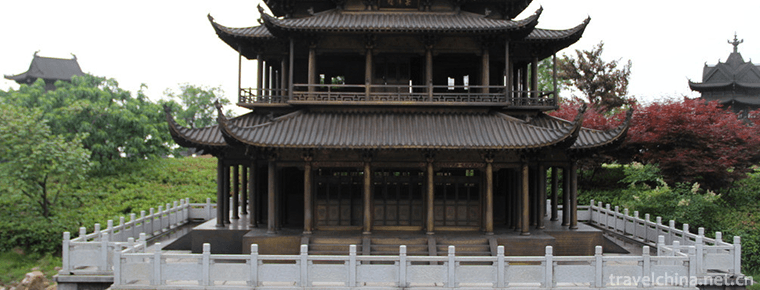
-
Chunxi Road
Jinjiang District Chunxi Road street, Chengdu, Sichuan, China.
Views: 98 Time 2018-10-02 -
Aerhchin Mountains
Altyn Tagh is a mountain range in southeastern the Xinjiang Uygur Autonomous Region, China. The eastern end extends to the two provinces of Qinghai and Gansu.
Views: 253 Time 2018-11-01 -
Xiqiao Mountain Scenic Area
Xiqiao Mountain Scenic Spot is located in the southwest of Nanhai District, Foshan City, Guangdong Province, China. It has 72 peaks, forming numerous waterscapes, 232 springs and 28 waterfalls..
Views: 145 Time 2018-12-12 -
Sanxingdui Museum
The Sanxingdui Museum was founded in August 1992 and opened in October 1997. It is located in the northeast corner of Sanxingdui Site, a national key cultural relic protection unit. .
Views: 422 Time 2018-12-18 -
Dongba Valley Scenic Area
Dongba Valley Scenic Area, located at the foot of Yulong Snow Mountain, Yunnan Province, 15 kilometers away from Lijiang River, is a natural ecological Grand Canyon, a rift valley torn apart during th.
Views: 125 Time 2018-12-20 -
Huaxia City Scenic Spot in Weihai
Weihai Huaxia City Scenic Area belongs to Huaxia Cultural Tourism Group Co., Ltd. It is located in Weihai, a beautiful seaside resort city. It is a large-scale ecological and cultural.
Views: 102 Time 2019-02-22 -
Xiaolangdi Dam
Xiaolangdi, the Yellow River Xiaolangdi, is located in the Yellow River Xiaolangdi Scenic Area at the junction of Luoyang City and Jiyuan City, Henan Province..
Views: 315 Time 2019-02-25 -
Beipiao Folk Stories
Beipiao Folklore is a local folk literature in Liaoning Province. It includes eight categories: folklore, character legend, fantasy story, life story, animal and plant story.
Views: 169 Time 2019-04-04 -
Gallequin Art
Jia Liqin is made by Jia Xiwang of Jia Liguo, who imitates Chinese Han Zheng. The shape is similar to that of Zheng, and it is also a string and a pillar. There are twenty-one strings in the current G.
Views: 172 Time 2019-04-30 -
Liang Ping Wood New Year Print
Liangping Wood Printing New Year Painting belongs to Liangping's "Three Wonders" (Bamboo Curtain, New Year Painting and Lantern Opera), which is a kind of painting art drawn by the people in.
Views: 171 Time 2019-05-13 -
Yandi Festival
"Yandi Mausoleum Festival" is divided into official and folk sacrifices. Folk sacrifice began in summer, official sacrifice originated in Zhou, and Emperor sacrifice originated in Tang Dynas.
Views: 165 Time 2019-07-10 -
Panzhihua from the Ming Dynasty to the Republic of China
In 1382, in the 15th year of Hongwu reign of the Ming Dynasty, the Xuanwei Department of paloros put Yunnan under the jurisdiction of Sichuan Chengxuan political envoys. In this place, there is another commander's Department of Sichuan Xingdu, which leads the lawsuits.
Views: 88 Time 2020-12-14
